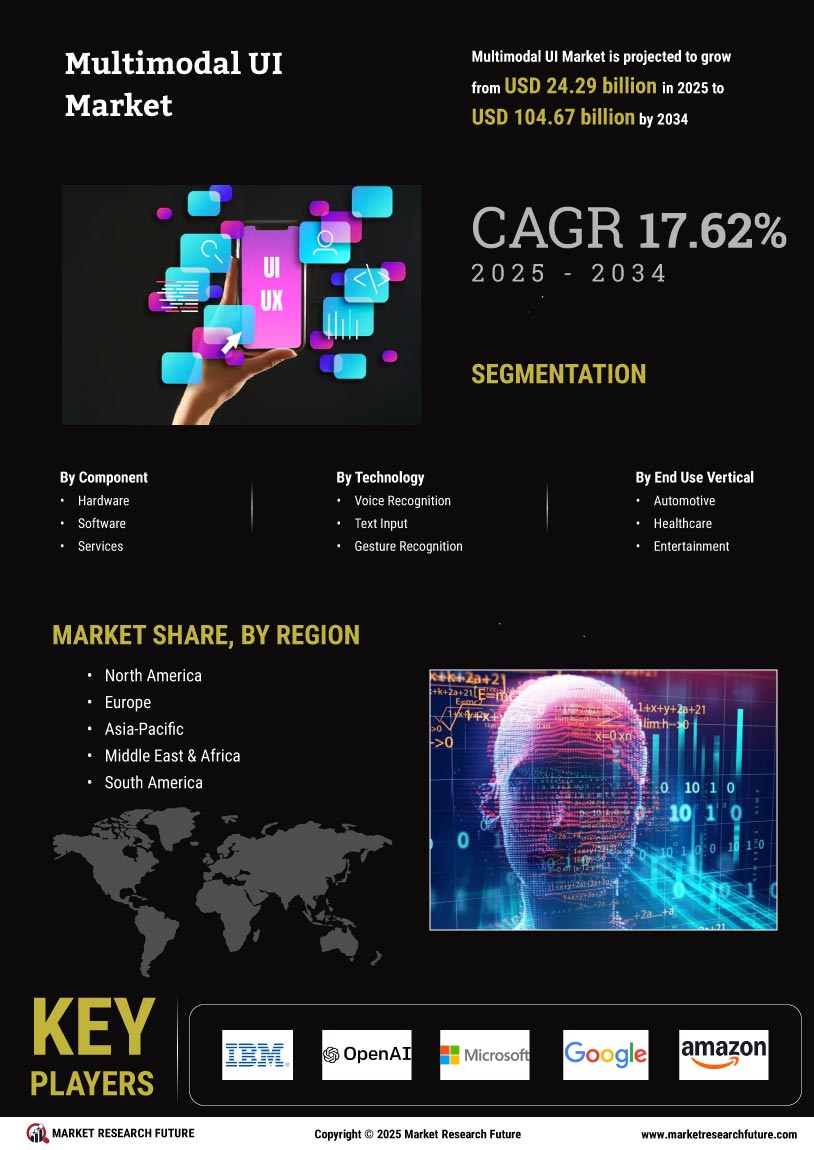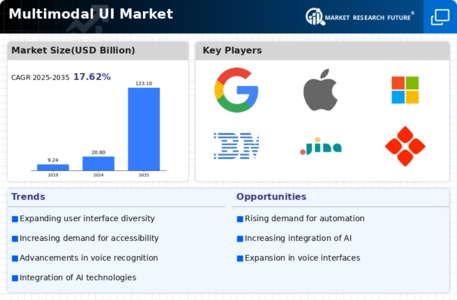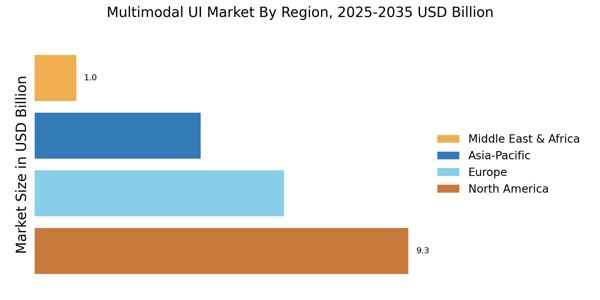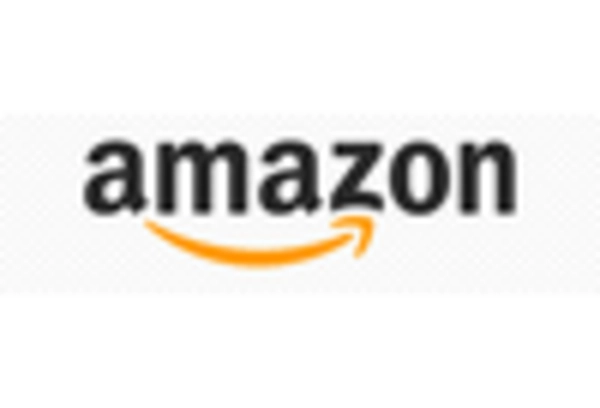Expansion of IoT Devices
The expansion of Internet of Things (IoT) devices is a transformative driver in the Multimodal UI Market. As the number of connected devices continues to rise, the need for intuitive interfaces that can manage multiple input methods becomes increasingly critical. Current estimates suggest that there will be over 75 billion IoT devices by 2025, creating a vast ecosystem for multimodal interactions. This proliferation necessitates the development of user interfaces that can seamlessly integrate various modalities, such as voice, touch, and visual feedback, to enhance user experience. Moreover, as smart homes and connected environments become more prevalent, the demand for cohesive and user-friendly multimodal systems is likely to grow. This trend not only facilitates easier control of devices but also promotes greater accessibility for users of all ages and abilities, positioning the expansion of IoT devices as a key factor in the Multimodal UI Market.
Integration of Voice Recognition
The integration of voice recognition technology is a pivotal driver in the Multimodal UI Market. As consumers increasingly seek hands-free interaction, the demand for voice-enabled interfaces has surged. According to recent data, the voice recognition segment is projected to grow at a compound annual growth rate of over 20% in the coming years. This growth is largely attributed to advancements in natural language processing and machine learning, which enhance the accuracy and responsiveness of voice commands. Consequently, businesses are investing in multimodal systems that seamlessly incorporate voice alongside other input methods, such as touch and gesture. This trend not only improves user experience but also broadens the accessibility of applications, making them more inclusive for diverse user groups. Thus, the integration of voice recognition is likely to remain a cornerstone of innovation within the Multimodal UI Market.
Advancements in Gesture Recognition
Advancements in gesture recognition technology are significantly influencing the Multimodal UI Market. The ability to interpret user gestures, such as swipes, pinches, and nods, allows for a more intuitive interaction with devices. Recent studies indicate that the gesture recognition market is expected to reach a valuation of several billion dollars by 2026, driven by its applications in gaming, virtual reality, and smart home devices. This technology enhances user engagement by providing a more immersive experience, which is particularly appealing in sectors like entertainment and education. Furthermore, as devices become more sophisticated, the demand for seamless integration of gesture controls with other modalities, such as voice and touch, is likely to increase. This convergence of technologies not only enriches user interaction but also positions gesture recognition as a vital component of the evolving Multimodal UI Market.
Increased Focus on Security and Privacy
Increased focus on security and privacy is emerging as a significant driver in the Multimodal UI Market. As users become more aware of data breaches and privacy concerns, there is a growing demand for interfaces that prioritize secure interactions. Recent surveys indicate that nearly 70% of consumers are more likely to engage with applications that demonstrate robust security measures. This trend is prompting developers to integrate advanced authentication methods, such as biometric recognition and multi-factor authentication, into multimodal systems. By ensuring that user data is protected across various input modalities, companies can build trust and enhance user confidence. Furthermore, regulatory frameworks are evolving to address these concerns, compelling businesses to adopt compliant practices. Thus, the emphasis on security and privacy is likely to shape the future development of the Multimodal UI Market.
Growing Demand for Personalized User Experiences
The growing demand for personalized user experiences is a crucial driver in the Multimodal UI Market. As consumers become more accustomed to tailored content and services, businesses are compelled to adopt multimodal interfaces that can adapt to individual preferences. Data suggests that companies leveraging personalized experiences can see customer engagement rates increase by up to 50%. This trend is particularly evident in sectors such as e-commerce and digital media, where user satisfaction directly correlates with retention and conversion rates. By utilizing data analytics and machine learning, organizations can create interfaces that respond to user behavior across various modalities, including visual, auditory, and tactile inputs. This shift towards personalization not only enhances user satisfaction but also fosters brand loyalty, making it a key focus area for stakeholders in the Multimodal UI Market.


















Leave a Comment